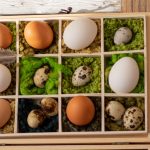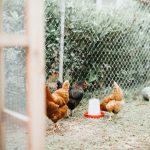Creating a spacious and stimulating environment for pet birds is crucial for their well-being and happiness. A large cage with ample room for movement and exercise is essential for physical health. Providing various perches, toys, and natural elements like branches and swings helps maintain mental stimulation and engagement.
Cage size and features should be tailored to the specific bird species, as space requirements differ. For instance, larger parrots such as macaws and cockatoos need significantly more space than smaller birds like finches or budgies. Out-of-cage time is equally important for exercise and exploration.
Establishing a bird-safe play area in the home allows birds to stretch their wings and interact with their surroundings. This area should be free from potential hazards such as toxic plants, open windows, or other pets. Equipping the space with toys, perches, and enrichment items provides additional mental and physical stimulation.
By offering a spacious and stimulating environment both inside and outside the cage, pet birds can thrive and lead happy, healthy lives.
Table of Contents
- 1 Offering a Variety of Enrichment Activities
- 2 Incorporating Natural Foraging Opportunities
- 3 Installing Perches and Roosts for Exploration
- 4 Introducing Novel Objects and Toys
- 5 Ensuring Social Interaction and Company
- 6 Implementing a Regular Routine and Schedule
- 7 FAQs
- 7.1 What are some ways to keep chickens busy and happy?
- 7.2 Why is it important to keep chickens busy and happy?
- 7.3 What are some examples of toys and activities for chickens?
- 7.4 How can I create a stimulating environment for my chickens?
- 7.5 What are some signs that my chickens are happy and content?
Key Takeaways
- A spacious and stimulating environment is essential for the well-being of birds.
- Enrichment activities should be varied to keep birds engaged and stimulated.
- Natural foraging opportunities should be incorporated to encourage natural behaviors.
- Installing perches and roosts allows birds to explore and feel secure in their environment.
- Introducing novel objects and toys can provide mental stimulation for birds.
Offering a Variety of Enrichment Activities
Providing Mental Stimulation through Toys and Games
This can include providing puzzle toys, foraging opportunities, and interactive games that encourage problem-solving and exploration. Additionally, rotating toys and introducing new items regularly can help to keep your bird’s environment fresh and exciting.
Interactive Playtime and Training Sessions
In addition to toys, enrichment activities can also include training sessions and interactive playtime with their human companions. Teaching your bird new tricks or commands not only provides mental stimulation but also strengthens the bond between you and your pet.
Ensuring a Fulfilled Pet Bird
Interactive playtime, such as using a wand toy or playing peek-a-boo, can also provide valuable social interaction and mental stimulation for your bird. By offering a variety of enrichment activities, you can ensure that your pet bird remains mentally engaged and fulfilled.
Incorporating Natural Foraging Opportunities

Incorporating natural foraging opportunities into your pet bird’s daily routine is essential for their mental and physical well-being. In the wild, birds spend a significant amount of time foraging for food, which provides them with mental stimulation and physical exercise. By replicating this natural behavior in captivity, you can help to keep your bird mentally engaged and prevent boredom.
There are many ways to incorporate foraging opportunities into your bird’s environment, such as hiding treats in foraging toys or providing them with fresh branches and foliage to explore. Foraging toys come in a variety of shapes and sizes, from simple puzzle feeders to more complex devices that require problem-solving skills to access the food inside. These toys can be filled with your bird’s favorite treats or pellets, encouraging them to work for their food and providing mental stimulation in the process.
Additionally, providing your bird with fresh branches and foliage from non-toxic plants can give them the opportunity to explore new textures, scents, and tastes while also providing physical exercise. By incorporating natural foraging opportunities into your bird’s daily routine, you can help to keep them mentally engaged and fulfilled.
Installing Perches and Roosts for Exploration
Installing a variety of perches and roosts in your pet bird’s cage is essential for their physical health and mental well-being. Birds spend a significant amount of time perched in the wild, so it’s important to provide them with a variety of perching options in captivity. Different types of perches, such as natural branches, rope perches, and cement perches, can provide your bird with different textures and diameters to grip, which can help to prevent foot problems such as arthritis or bumblefoot.
In addition to traditional perches, providing your bird with roosts or platforms within their cage can give them the opportunity to explore different levels and areas within their environment. This can help to keep them mentally stimulated and engaged, as they have the opportunity to move around and interact with their surroundings. Additionally, providing roosts at different heights within the cage can mimic the natural environment of birds in the wild, where they would perch at varying heights throughout the day.
By installing perches and roosts for exploration, you can help to ensure that your pet bird has the opportunity to move around and engage with their environment in a natural and fulfilling way.
Introducing Novel Objects and Toys
Introducing novel objects and toys into your pet bird’s environment is a great way to keep them mentally stimulated and engaged. Birds are naturally curious creatures that enjoy exploring new items in their environment. By regularly introducing new toys, objects, or even rearranging their cage layout, you can provide your bird with mental enrichment and prevent boredom.
Novel objects can include new types of toys, such as puzzle feeders or shreddable toys, as well as everyday items like paper cups or cardboard boxes that can be used for play. In addition to toys, introducing novel objects can also include providing your bird with new perches or platforms within their cage, or even rearranging their existing perches to create a new layout. This can give your bird the opportunity to explore their environment in a new way, keeping them mentally engaged and preventing monotony.
By regularly introducing novel objects and toys into your pet bird’s environment, you can help to keep them mentally stimulated and fulfilled.

Spending Quality Time with Your Bird
Spending quality time with your bird each day through training sessions, playtime, or simply talking to them can provide valuable mental stimulation and social interaction.
Providing Company for Your Bird
Additionally, if possible, providing your bird with the company of another compatible bird can help to prevent loneliness and provide them with important socialization opportunities. In addition to human interaction, it’s important to consider the social needs of your bird within their own species. If you have a single bird, providing them with opportunities to interact with other birds through supervised playdates or visits to a bird-friendly socialization area can help to fulfill their social needs.
Creating a Harmonious Environment for Multiple Birds
If you have multiple birds, ensuring that they have enough space within their environment to interact peacefully is crucial for their overall well-being. By ensuring social interaction and company for your pet bird, you can help to prevent loneliness and provide them with the mental stimulation they need to thrive.
Implementing a Regular Routine and Schedule
Implementing a regular routine and schedule for your pet bird is essential for their mental well-being. Birds thrive on routine and predictability, so providing them with a consistent daily schedule can help to reduce stress and anxiety while also providing mental stimulation through anticipation of activities. This routine can include regular feeding times, out-of-cage playtime, training sessions, and bedtime rituals that provide structure and stability for your bird.
In addition to daily routines, it’s important to consider the seasonal needs of your bird as well. For example, many species of birds experience hormonal changes during certain times of the year that can affect their behavior and well-being. By understanding these natural cycles and adjusting their routine accordingly, you can help to provide them with the mental stimulation they need while also addressing any potential behavioral issues that may arise.
By implementing a regular routine and schedule for your pet bird, you can help to provide them with the stability and predictability they need to thrive mentally and emotionally. In conclusion, providing a spacious and stimulating environment for your pet bird is essential for their overall well-being. Offering a variety of enrichment activities, incorporating natural foraging opportunities, installing perches and roosts for exploration, introducing novel objects and toys, ensuring social interaction and company, and implementing a regular routine and schedule are all important factors in keeping your pet bird mentally stimulated and fulfilled.
By considering these aspects of care, you can ensure that your pet bird has the opportunity to thrive in captivity while living a happy, healthy life.
If you’re looking for ways to keep your chickens busy and happy, you might want to check out this article on where to put your chicken coop. It offers tips on creating a stimulating environment for your chickens, which can help keep them entertained and content.
FAQs
What are some ways to keep chickens busy and happy?
Some ways to keep chickens busy and happy include providing them with a spacious and stimulating environment, offering a variety of toys and activities, and allowing them to forage for food.
Why is it important to keep chickens busy and happy?
Keeping chickens busy and happy is important for their overall well-being and can help reduce stress, aggression, and boredom-related behaviors. It can also improve egg production and the quality of eggs.
What are some examples of toys and activities for chickens?
Examples of toys and activities for chickens include hanging treats, mirrors, perches, and objects for pecking and scratching. Additionally, providing access to natural elements like dirt, grass, and insects can also keep chickens entertained.
How can I create a stimulating environment for my chickens?
You can create a stimulating environment for your chickens by providing them with ample space to roam, access to natural elements like dirt and grass, and opportunities for social interaction with other chickens.
What are some signs that my chickens are happy and content?
Signs that your chickens are happy and content include active foraging and scratching, relaxed body language, and the production of high-quality eggs. Additionally, content chickens will exhibit social behaviors and vocalizations.
Meet Walter, the feathered-friend fanatic of Florida! Nestled in the sunshine state, Walter struts through life with his feathered companions, clucking his way to happiness. With a coop that’s fancier than a five-star hotel, he’s the Don Juan of the chicken world. When he’s not teaching his hens to do the cha-cha, you’ll find him in a heated debate with his prized rooster, Sir Clucks-a-Lot. Walter’s poultry passion is no yolk; he’s the sunny-side-up guy you never knew you needed in your flock of friends!







